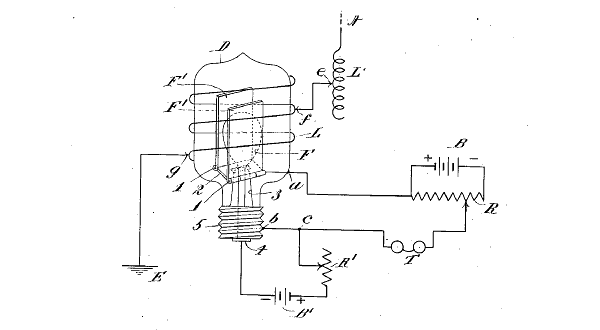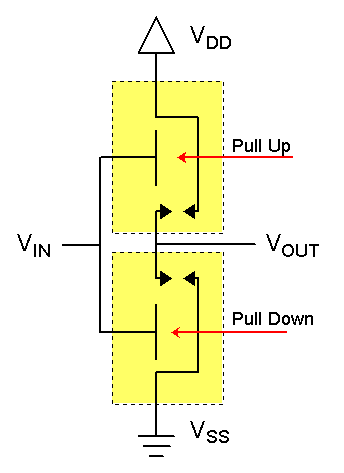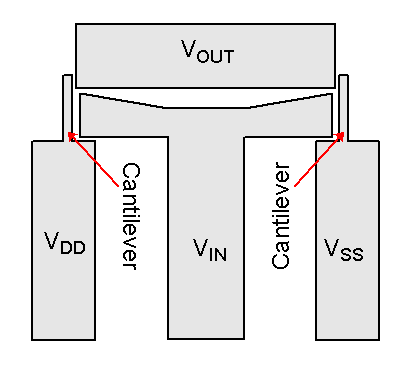| Tikalon Blog is now in archive mode.
An easily printed and saved version of this article, and a link
to a directory of all articles, can be found below: |
|
This article |
| Directory of all articles |
High Temperature SiC Switch
October 11, 2010
The
electronic world has transformed from one that was almost exclusively
analog to one that's now nearly all
digital. The lengthy analog interlude at the beginning of the
twentieth century makes it easy to forget that electronics started out as digital. You could look all the way back to the
telegraph and
electromechanical components such as
relays, which are definitely are digital. These are probably better defined as "electric," rather than "electronic," since electronics is more than passing a current through a wire. It involves an active element, such as a
vacuum tube.
The first digital electronic element was the
coherer, a
radio detector that replaced the primitive
spark gap. The coherer, which is essentially a tube filled with metal powder with electrodes at each end, was invented by the French physicist,
Édouard Branly, around 1890. The tube has a reasonably high
resistance, but when it's connected between ground and a radio
antenna, the resistance will decrease upon reception of a radio pulse. With appropriate circuitry, a coherer could both detect and amplify a radio signal so it could be heard. Unfortunately, the radio operator needed to tap the device with a hammer every once in a while to regenerate its action. This lead to the invention of an automatic tapper that would hammer the tube after receipt of each radio pulse. The operating principle of the coherer is probably the
dielectric breakdown of the oxide that coats the metal powder; but, as you can imagine, there's not enough research interest in the coherer to elucidate its operating principle.
The first vacuum tube, the
De Forrest Audion, was also a digital device. The audion was a tube containing a filament and a plate, just like a
vacuum tube diode, but it was filled with a very low pressure gas. There was a wire wrapped around it that was connected through a
tuned circuit to an antenna. Radio waves would cause an increased electrical conductivity between the
filament and the
plate, so the device acted like a coherer radio detector. Like the coherer, its operation was non-linear, so it could be considered a digital circuit element. Audions were later replaced by
triodes and other vacuum tubes that contained no gas and were
linear amplifiers. At that point, around the second decade of the twentieth century, electronics became mostly analog. Analog reigned supreme through most of the century until the transistor made
digital electronics practical in the form of
RTL,
DTL and
TTL logic circuits that presaged the
modern computer.

Fig. 4 from Lee De Forrest's Audion Patent (Ref. 1).
The transistors in computers act as on-off switches. A proper assemblage of such switches can make
logic circuits for such functions as
NOT,
OR,
AND, and the like. Such transistors are just an elegant version of the electromechanical relays that powered some of the first demonstration logic devices created by
George Stibitz at
Bell Labs. Since it's difficult to make transistors that operate at very high temperatures, engineers at
Case Western Reserve University (
Cleveland, OH) decided to make a type of high temperature relay instead.[2-6] The relay is made from silicon carbide, and it doesn't use magnetic force actuation like conventional relays. It's a
NEMS (nanoelectromechanical system) device that uses electrostatic force for actuation. Just like an insulated-gate field effect transistor, there's no current required on the input electrode to hold its state, and there's a switching action from a zero conductance to a highly conductive state.
To make the SiC relays useful in electronic circuitry, the Case team configured pairs of these as a complementary switching cell that operates much like the
CMOS cell it would replace. The switching cell, shown in the figures, converts an input voltage to an
inverted output voltage, and it's been operated up to 500
oC. The actuation speed is somewhat slow, only 500 kHz, but these structures have been operated for more than 2 billion cycles at 500
oC. Five hundred kilohertz might seem too slow to do something useful, but the original
RadioShack computer, the
TRS-80, had a clock speed of only 1.77 MHz, and it was suited for many tasks.

Schematic diagram of an SiC NEMS complementary switch cell.
![]()
![]()

Cross-sectional view of an SiC NEMS complementary switch cell.
The simple structure shown in the figure ensures complementary action. However, there will be either a high impedance transition state between the logic states, or a short circuit if both cantilevers contact the output at the same time. This can happen in a mechanical system if
resonance occurs at a particular operating frequency.
References:
- Lee De Forrest, "Wireless Telegraphy," US Patent No. 841,386 (Jan 15, 1907).
- Te-Hao Lee, Swarup Bhunia and Mehran Mehregany, "Electromechanical Computing at 500°C with Silicon Carbide," Science, vol. 329. no. 5997 (September 10, 2010), pp. 1316-1318.
- Kevin Mayhood, "New computer switches handle heat that renders transistors useless," Case Western Reserve University Press Release, October 7, 2010.
- Logic circuit takes the heat, Physics World (September 14, 2010).
- T.-H. Lee, K.M. Speer, X.A. Fu, S. Bhunia and M. Mehregany, "Polycrystalline silicon carbide NEMS for high-temperature logic," Proceedings of 2009 Solid-State Sensors, Actuators and Microsystems Conference (Denver, CO, June 21-25, 2005), pp. 900-903).
- X. L. Feng, M. H. Matheny, C. A. Zorman, M. Mehregany and M. L. Roukes, "Low Voltage Nanoelectromechanical Switches Based on Silicon Carbide Nanowires," Nano Lett., vol. 10, no. 8 (July 16, 2010), pp. 2891-2896.
Permanent Link to this article
Linked Keywords: Electronic world; analog; digital; twentieth century; telegraph; electromechanical; relays; vacuum tube; coherer; radio; detector; spark gap; Édouard Branly; resistance; antenna; dielectric breakdown; Lee De Forrest; Audion; vacuum tube diode; tuned circuit; filament; plate; triode; linear amplifiers; digital electronics; RTL; DTL; TTL; modern computer; logic circuits; NOT; OR; AND; George Stibitz; Bell Labs; Case Western Reserve University; Cleveland, OH; NEMS; CMOS; inverter; RadioShack; TRS-80; resonance; US Patent No. 841,386.